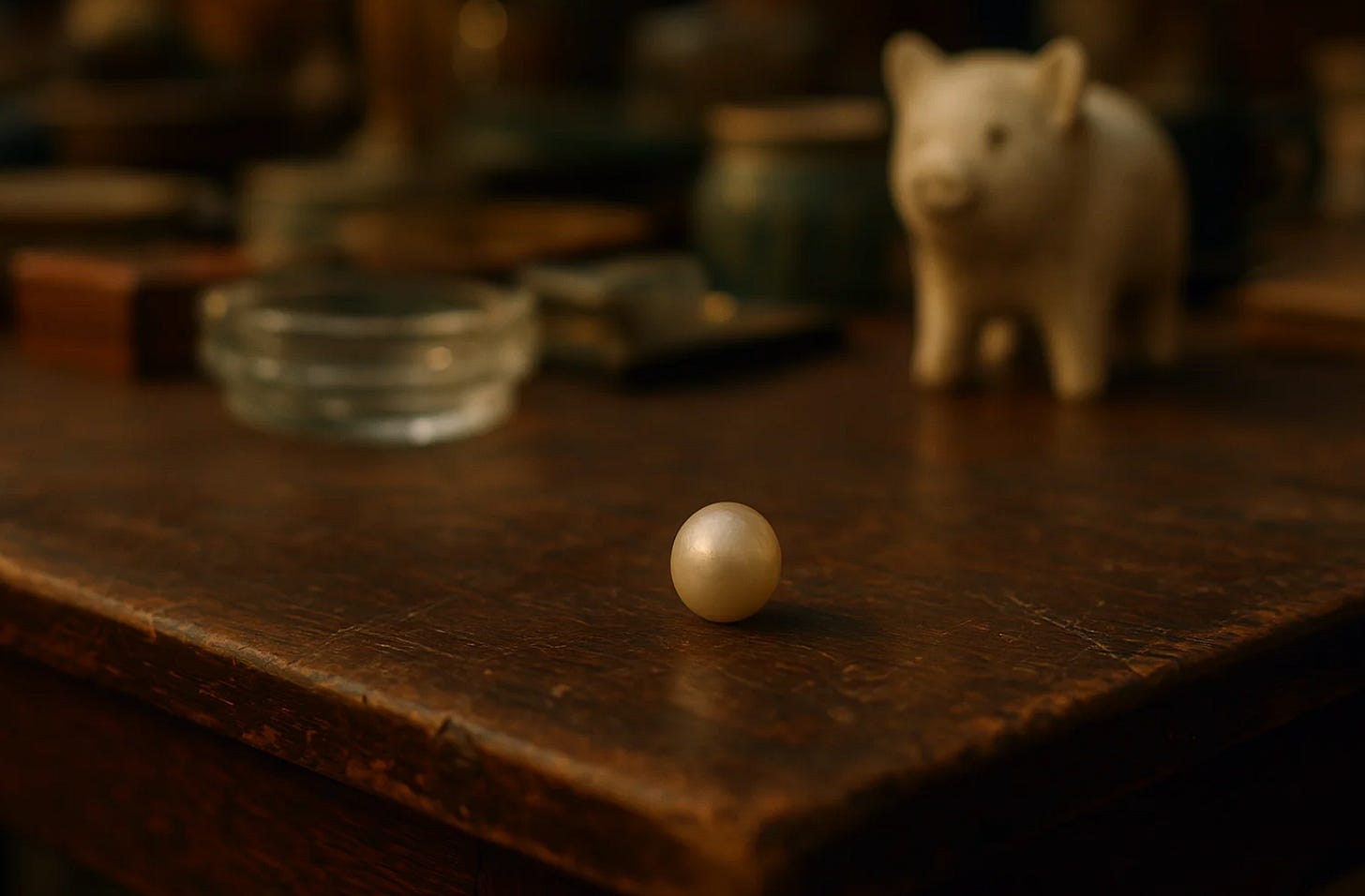[This week I challenged students to generate a story written entirely by AI that would make as many people as possible in our class uncertain whether it was indeed created by algorithm, or showed the telltale signs of a human’s thumbprints (select students were secretly chosen to write fake AI stories, i.e. ones they wrote themselves to keep the contest interesting). Of all the short stories and poems submitted, “The Pearl” not only cast the most doubt—spoiler alert: it was written by ChatGPT—but also the most animated and confused debate for its possible interpretation. As always, please consider becoming a supporter of A Poet’s Notebook for the cost of one cup of coffee per month. —TF]
THE PEARL
He found it at the antique fair on a Sunday afternoon when the city was unusually warm for early spring. The kind of warmth that makes you believe in small things again. Not miracles, but quieter alternatives: an old friend texting at the right moment, some dog that chooses you for no reason, a sudden sense of breeze on a stifling day.
He wasn’t looking for anything. He told himself he wasn’t, at least. He was there with two friends, meandering between stalls of faded postcards, cigarette tins, costume jewelry, the occasional rusted dagger. They spoke in half-thoughts, circling conversations they weren’t sure how to have.
The pearl was at the edge of a scratched mahogany table. Unstrung. Resting alone, without explanation. Not displayed, just there. Like it had been left behind by someone who meant to come back. Like it had been waiting.
It was small—not insignificant—but discreet. He picked it up and held it. Cool to the touch. Solid in the way that makes you feel seen. Not precious, not glowing. Just dense with something he couldn’t name. The kind of object that somehow remembers you as you remember it.
One of his friends said, “Oh, that’s definitely a ring.”
The other said, “No, an earring. Singular. Like a character lost in a plot.”
He didn’t answer. He imagined wearing it as a ring, but it felt too declarative. As an earring, it felt unfinished. Neither version made sense. And yet he didn’t put it down.
The vendor was distracted, rearranging ashtrays and a chipped porcelain pig. No story was offered. No history. Just the pearl. Whole. Contextless. Quietly watching.
“Why are you holding it like that?” one of the friends asked.
He didn’t know what “like that” meant.
He said, “I’m not sure it suits me.”
“Then why does it matter?”
He almost laughed. Because that was the real question, wasn’t it?
There was something about the pearl that reminded him of a fond song he used to listen to almost everyday as a child. Not in the obvious ways. But in the weight of it. In the way it didn’t demand attention until it had it. And then held on, almost rudely. Like the silence after a long bitter fight. It was the feeling of too much and not nearly enough.


